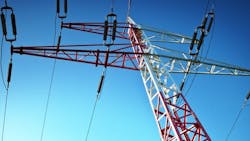PG&E To Raise About $1 Billion For Transmission Through Leases To Citizens Energy
Pacific Gas and Electric Company (PG&E) has requested an approval from the California Public Utilities Commission (CPUC) for a transmission lease program with nonprofit Citizens Energy, which could invest about $1 billion through the program.
The program will not only focus on nontraditional funding sources to reduce customer bills but also allow PG&E to fasten the required work on its electric system for improved safety, reliability, capacity and infrastructure health, and help with new interconnections to clean-energy projects supporting decarbonization.
Citizens aims to contribute majority of its profits from the program to clean, reliable and affordable energy investments in low-income and disadvantaged communities across PG&E’s service area.
The program is expected to generate huge charitable benefits over the lives of the leases if Citizens invests the entire $1 billion. The program is designed for customers to pay less for electric system work on the leased transmission assets.
Citizens President, Joseph P. Kennedy III, added that the program will serve the nonprofit’s mission to support projects and programs increasing grid strength and reducing electricity costs.
PG&E is predicted to not only offer Citizens with options to lease portions of PG&E electric transmission assets through the program but also five separate leases of 30 years each, for a total investment of up to $1 billion.
Citizens will make an upfront payment to PG&E as prepaid rent and lease the rights through a wholly owned subsidiary, which will be a CAISO participating transmission owner. The nonprofit will recover the costs of its investments through the CAISO high-voltage Transmission Access Charge following Federal Regulatory Energy Commission review and approval ensuring that the costs are reasonable.
Initially, Citizens aims to contribute 50% and increasing to 90%, of net after-tax profits from its investments in the program to low-income and disadvantaged communities in Central and Northern California in need of clean, reliable and affordable energy investments.
Under the terms of the program, the transmission assets will remain under PG&E ownership and the operational control of the California Independent System Operator (CAISO). PG&E will be responsible for the development, design, permitting, engineering, procurement, construction and operations and maintenance of the relevant assets.
PG&E and Citizens expect to close the first lease option in early 2025, with up to four more to follow through 2030, following regulatory approvals.
While Citizens will cover the capital cost component of its FERC rate, an estimate of the rate PG&E charging customers without the program, the nonprofit has also agreed to give up recovery from CAISO customers of its own development and administrative and general costs, among other costs, due to the size and structure of the program.
The CPUC and FERC have approved two similar programs between Citizens and San Diego Gas & Electric (SDG&E), the 117-mile Sunrise PowerLink transmission line, which connects SDG&E’s grid to renewable energy generated in the Imperial Valley; and the Sycamore-Penasquitos transmission line, which links two substations in San Diego through partially undergrounded lines for improved safety and reliability.
Citizens’ $85 million investment in Sunrise PowerLink is expected to generate $45 million for disadvantaged communities over 30 years, while its $27 million investment in Sycamore-Penasquitos is expected to result in $14 million in charitable funds over the same period.
A third project, an 18-mile upgrade to an Imperial Irrigation District transmission line, importing and exporting power between California’s Imperial Valley and Arizona is expected to be operational in spring 2024 and provide $18 million in charitable funds on a $40 million Citizens investment. Citizens’ funds from the programs supported the development of a 39-megawatt community solar program to benefit 12,000 low-income customers of the Imperial Irrigation District.
About the Author
T&D World Staff
Content Team
Nikki Chandler
Group Editorial Director, Energy
[email protected]
Jeff Postelwait
Managing Editor
[email protected]
Christina Marsh
Senior Editor
[email protected]
Ryan Baker
Associate Editor
[email protected]
Amy Fischbach
Electric Utility Operations
[email protected]
Rich Maxwell
Community Editor
[email protected]
Gene Wolf
Technical Editor
[email protected]
